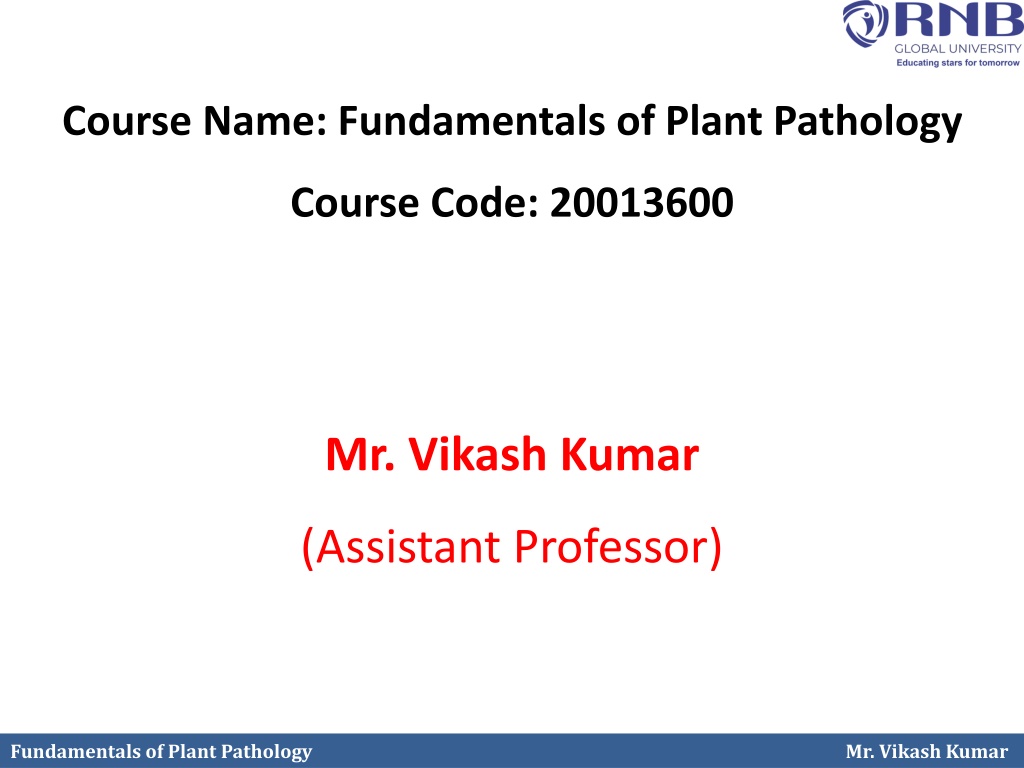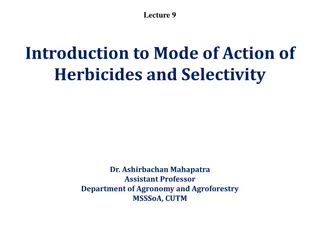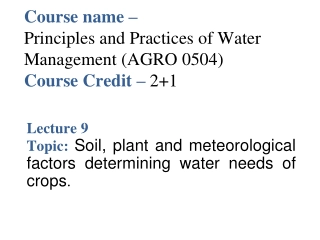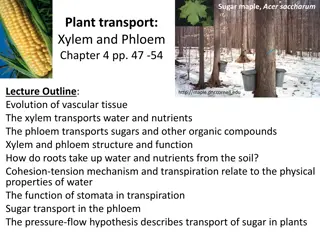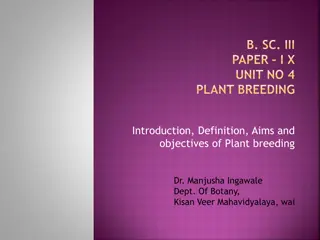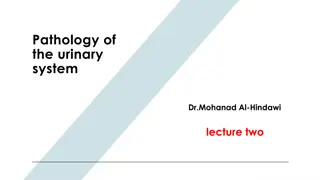Understanding Fundamentals of Plant Pathology with Mr. Vikash Kumar
Dive into the world of plant pathology with Mr. Vikash Kumar, an Assistant Professor, as he covers the course objectives, introduction to plant diseases, definitions, scope, responsibilities, and the importance of plant diseases. Learn about identifying diseases, pathogen nature, disease management strategies, and more to enhance your knowledge in this field.
Download Presentation
Please find below an Image/Link to download the presentation.
The content on the website is provided AS IS for your information and personal use only. It may not be sold, licensed, or shared on other websites without obtaining consent from the author. Download presentation by click this link. If you encounter any issues during the download, it is possible that the publisher has removed the file from their server.
Presentation Transcript
Course Name: Fundamentals of Plant Pathology Course Code: 20013600 Mr. Vikash Kumar (Assistant Professor) Fundamentals of Plant Pathology Mr. Vikash Kumar
Course Objectives 1: Name and identify different Diseases, nature of pathogens and different strategies for management of plant diseases. 2: Outline concepts, nomenclature, classification and characters of pathogens 3: Apply different principles and methods for plant disease management. 4: Take a part in identification of diseases and marketing of relevant pesticides. 5: Conclude methods to diagnose and manage a wide range of plant diseases. Fundamentals of Plant Pathology Mr. Vikash Kumar
Introduction, Importance of plant diseases, scope and objectives of Plant Pathology Fundamentals of Plant Pathology Mr. Vikash Kumar
Plant Pathology- Definition Plant Pathology, also known as Phytopathology is a branch of agricultural, biological or botanical science which deals with the study of diseases in plants - their causes, etiology, epidemiology, resulting losses and management. Objectives of Plant Pathology To study living, non-living and environmental causes of diseases or disorders of the plants. To study the mechanism of plant disease development. To study interaction between host/susceptible and the pathogens. To develop systems of management of plant diseases and reducing losses caused by them. Fundamentals of Plant Pathology Mr. Vikash Kumar
Scope of Plant Pathology: Scope and responsibilities of plant pathology is unlimited. Its ultimate goal is to prevent and control plant diseases of economic importance. Responsibilities of the science of plant pathology may be summarized as under; Survey of fields, orchards and areas in order to find out prevalence of diseases and their incidence. Recording new diseases of economic importance if any, with their identification and extent of incidence. Assessment of losses caused by different diseases of economic importance. Study of etiology, symptoms, predisposing factors and recurrence of such diseases. Find out suitable and economic methods of management of economically important plant diseases. Assisting in breeding of disease resistant varieties. To train the extension workers and subject matter specialists in order to bridge the gap between pathologists and farmers for better crop production. Fundamentals of Plant Pathology Mr. Vikash Kumar
Importance of Plant Diseases (1.) Losses they cause:- About 34% of the crop produce is lost annually due to diseases, insect- pests and weeds on the global basis; out of which, 12% is lost due to diseases (caused by fungi, bacteria or viruses), 11% due to nematodes, 7% due to insect-pests and 3% due to weeds. Fundamentals of Plant Pathology Mr. Vikash Kumar
(2.) Epidemics Irish famine:- Late blight of potato caused by Phytophthora infestans was responsible for causing Irish famine in 1845 in Ireland by destroying the potato crop, the staple food of the people. Hundreds of thousand people died of hunger and disease, and there was a large scale migration of the population to other countries including North American continent. The population of Ireland was 8 million in 1840, which was reduced to 4 million after the famine. This single disease (disease also called Birth of Plant Pathology) forced man to realize the importance of plant diseases, and brought the science of Plant Pathology to lime light. Fundamentals of Plant Pathology Mr. Vikash Kumar
Other Famines Bengal famine:- Brown spot of rice caused by Helminthosporium oryzae was responsible for Bengal famine in 1943, which many people think one of the reasons for the division of Bengal. Coffee rust caused by Hemileia vastatrix forced to cut down the coffee plants in Sri Lanka in 1867. Powdery mildew of grapevines caused by (Uncinula necator), by 1854, reduced the French wine production by 80 per cent. In 1878, the downy mildew caused by Plasmopara viticola ultimately led to the discovery of Bordeaux mixture by Prof. PMA Milardet. Fundamentals of Plant Pathology Mr. Vikash Kumar
(3.) Effect on Society Infected grains or the fruits may contain toxins (such as aflatoxin, fumonosin) which cause insanity, paralysis, stomach disorder and liver cancer. The money spent on the management of plant diseases is also a loss because in the absence of diseases this money could be saved. There are many other implications on the transport and agro-based industry in the event of plant disease inflicted yield loss. There is restriction on the movements of food grains and other agricultural produce due to the threat of quarantine pathogens and pesticide residues in the produce causing further loss. Fundamentals of Plant Pathology Mr. Vikash Kumar
Thank You Fundamentals of Plant Pathology Mr. Vikash Kumar
